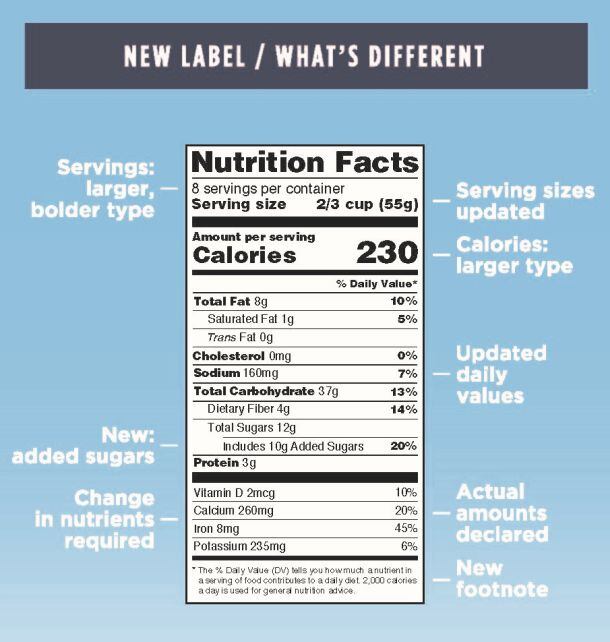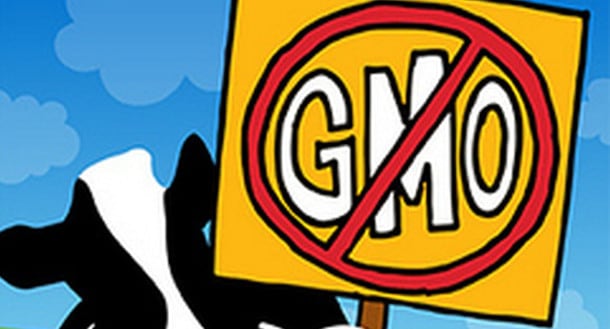As for the new–look Nutrition Facts panel, there is a “growing expectation” that the compliance deadline is likely to shift to 2021- coinciding with the probable date for compliance with new GMO labeling regulations (assuming firms have up to three years from USDA’s July 2018 – USDA’s deadline for finalizing a national bioengineered food disclosure standard – to update labels), said speakers at the two-day ACI forum.
While FDA commissioner Scott Gottlieb told senators at his confirmation hearing that he would consider a delay to the current deadlines for using the new Nutrition Facts panel (summer 2018 for large companies, summer 2019 for smaller ones), the FDA has not officially confirmed a new deadline, however, putting food manufacturers in a difficult position.
Dietary fiber frustration
One food industry source at the conference told FoodNavigator-USA that his firm was working with the existing timetable, but said, “the buzz is that we’re looking at 2021.”
He added: “The process takes so long that if you’re a large company you have to start planning now; there is also a concern over capacity at printers. But if you think added sugar labeling could negatively impact your sales, you might have some incentive to wait a little bit longer to see if there is a delay before you have to change your labels.”
There is also a lot of uncertainty over which ingredients will be classified as dietary fibers under the new look panel, and whether the FDA will be persuaded by industry petitions arguing that isolated or synthetic non-digestible carbohydrates such as inulin and polydextrose should be considered dietary fibers for labeling purposes, he said.
“Inulin is very widely used in foods so a lot of people are just keeping our fingers crossed that the FDA approves the petition [to get inulin classified as a fiber].
“Of course you can still use inulin in the meantime, but there may be less incentive if you can’t list it as grams of fiber on the Nutrition Facts panel. It all depends if you can easily replace it with something else [that is classified as a fiber] in your formulation.”

"The compliance date for the Nutrition Facts label and serving size final rules is July 26, 2018. However, manufacturers with less than $10 million in annual food sales will have an additional year to comply. The FDA is reviewing requests to either maintain or extend the compliance date and will communicate publicly any changes to this date."
FDA spokesperson, May 24, 2017
Daily values and de-fortification: If it will save money, companies will consider it
One aspect of the new nutrition labeling regulations that is beginning to generate more debate is whether reductions in the daily values of several vitamins and minerals will lead to widespread de-fortification as manufacturers realize they can reduce vitamin/mineral fortification levels in their products and still make ‘good/excellent source of’ claims.
It’s too early to say how firms will respond, he said: “But it may be an unintended consequence of the regulations. If using a little less means you can save money, I can certainly see some companies doing it. Every time you update your labels, companies will do this kind of calculation, so it will be interesting to see what happens.”

“Regulation has become a dirty word [under the Trump administration], but I think of regulations as protections… health protections, economic protections. They have gone through a vetting process. And there is a reason for these protections. They serve a purpose.”
Michael Jacobson, PhD, president, Center for Science in the Public Interest (CSPI), ACI food law and regulatory forum, May 24, 2017
FDA natural probe: ‘It’s probably just going to die on the vine’
As for natural claims – another big talking point at the ACI forum – regulatory experts we quizzed at the event said they not expecting the FDA to nail down a definition anytime soon, given the complexity of the task, likely budget cuts and shifting priorities at the FDA, with one source predicting the initiative would likely “die on the vine.”
He also pointed out that the FDA never actually promised it would come up with a definition, merely that it would consider the matter: “The FDA is under no obligation to put out a final rule on this and I personally don’t think that it will. It’s probably just going to die on the vine.”
What does ‘bioengineered’ mean?
As for GMO labeling, Squire Patton Boggs partner Adam Fox said the narrow definition of ‘bioengineered’ in the national bioengineered food disclosure standard – as currently written (which refers to foods that ‘contain genetic material’ from GM crops) might potentially exclude scores of highly refined oils, sugars, starches, and sweeteners from GM crops, in which no detectible ‘genetic material’ might be present.
Meanwhile, its focus on rDNA techniques could also exempt foods made via new biotech techniques such as gene editing, noted Fox, although USDA senior policy analyst Andrea Huberty told FoodNavigator-USA that USDA was “well aware” of these concerns, and had written to senators last year confirming that the law gave USDA the authority to consider all of the above ingredients and techniques, regardless of the [vague] wording of the bill.

Huberty did however clarify that USDA was not planning on defining ‘non-GMO’ claims as part of the GMO labeling regulation (which should be published in the fall of 2017 and finalized in July 2018), although such claims have prompted several recent lawsuits.
The law will not, meanwhile, address whether bioengineered foods can be labeled as ‘natural,’ prompting Fox to argue that “it hasn’t really solved very much of anything.”
He added: “Will this put an end to false advertising lawsuits [over whether foods using ingredients from GM crops are ‘natural’]? No!”
GMO labeling law: ‘An opportunity to embrace transparency’
Steve Armstrong, formerly chief food law counsel at Campbell Soup and now an independent advisor at EAS Consulting Group, told delegates that federal GMO labeling legislation represented “a pivotal moment for the food industry” and “an opportunity to embrace transparency.”
So what wording resonates best with consumers?
Consumer research conducted by Campbell Soup – which hit the headlines in January 2016 after unveiling plans to voluntarily roll out GMO labels – suggested that shoppers wanted specifics, he said.
The most preferred statement was along the lines of ‘The corn, soy and sugar in this product comes from GM crops. The FDA considers GMO crops to be safe,’ he recalled.
While then USDA secretary Tom Vilsack had apparently “liked” the proposed wording style, the FDA was concerned that it might falsely imply that all GM crops had undergone pre-market approval by the agency, observed Armstrong, so Campbell did not pursue it.
“Right now, we must all remain actively engaged and committed to developing the right standards and clear language for transparent and helpful communications with consumers.”
QR codes
But what about using QR codes (which link to a webpage) on pack rather than spelling out in a written statement that a given product uses ingredients from GMOs?
Under the legislation, food companies will have the option of disclosing GMO ingredients via “text, symbol or digital link,” noted Crowell & Moring partner John Fuson.
And while there had been a lot of opposition to using QR codes, it did offer some obvious advantages in that the information the code linked to (webpages) could be constantly updated, he added.
“I’d be surprised if QR codes don’t become the default because they take you to a website that can be updated in real time. So you don’t have to print new labels if something changes [as regards ingredients sourcing for example].”
Read more from the ACI forum:
What’s in your ‘natural’ flavors? (And is your cane sugar vegan?)
